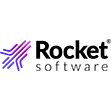

(dTosh/Shutterstock)
Anaconda created a name for itself in the data science community over the past decade by combining hundreds of the most popular Python-based statistical and machine learning packages, such as NumPy, Pandas, and SciPy, into one easy-to-use package. As the GenAI revolution spreads across the land, the Austin, Texas-based company is now looking to find stronger footing to take it to the next decade.
In January, Anaconda announced a change at the top of its org chart, with longtime member of the board of directors Barry Libert taking over the CEO position and Peter Wang moving to head up the company’s new AI Incubator as its Chief AI & Innovation Officer. The company stated the goal of the change was to a further accelerate growth of the company, which already had expanded its enterprise customer count by 15x since 2020 and just had its biggest quarter in Q4 2023 while reducing its burn by 65%.
Libert and Wang recently made time for an abbreviated Q&A with Datanami, which is published here.
Datanami: Barry, what are your goals as the new CEO of Anaconda? What changes will you make to achieve them?
Libert: Since stepping into my role as CEO of Anaconda, my primary goal has been to build the leading AI enablement platform for the open-source world. Python is the foundation of modern AI and as the most trusted and widely used platform in the Python community, supporting nearly 50 million users and 800,000 organizations, Anaconda has a huge role to play in ensuring that the future of AI remains open, accessible, and secure.
The open-source Python community has been instrumental to Anaconda’s success and continuing to source innovation from open-source communities will keep Anaconda at the cutting edge. Between the partnerships we’ve established with industry leaders like IBM, Oracle, and Snowflake, and the open-source investments we’ve made through PyScript, Panel, and funding NumFOCUS, Anaconda is building a platform for everyone that wants to innovate and create. This isn’t a change in strategy but rather a doubling down on everything we’ve learned about building a thriving community.
AI is central to our vision for expanding Anaconda’s platform from 50 to 500 million users and 800,000 organizations to 5 million or more. More and more people will experience and work with AI in their daily lives and Anaconda will meet them at every stage of their journey. From the complete non-technical user to the most advanced AI developer, we recognize the importance of delivering to our users a seamless experience that allows them to succeed in any arena, whether that’s on-premises, in the cloud, or at the edge.
I am confident that with our talented team, vibrant community and partners, and a strong commitment to pioneering AI, Anaconda will build the platform for the open-source AI world.
Datanami: Peter, how does the AI Incubator fit in with Anaconda’s mission in the past, and how do you see it helping create what Anaconda will become in the future?
Wang: We created Anaconda in 2012 out of the need to bring Python into business data analytics and from the start, we’ve had an ongoing commitment to foster open-source innovation. Over the years the use of Python has grown instrumentally and our mission to empower the world with the power of AI, data science, and Python has remained at the core of everything we do.
Today, Python plays a central role in AI development – anyone using the tech has Python within some layer of their stack, making the creation of our AI Incubator a natural extension of our business. It’s also a step forward in our ongoing support to enable global institutions – from corporations to academia – in harnessing the power of open source, not only for competitive advantage but to also create a better world. I’m proud to be leading our AI Incubator and to oversee our developments in advancing Python performance in AI workloads.
Anaconda has become the foundation of modern AI development and as our world continues to become AI-driven, there’s a mounting need for a unifying force that simplifies the experience and delivery of AI applications. With the developments coming out of our AI incubator, paired with our Python and data science expertise, we see Anaconda becoming the operating system for AI – creating a bridge between AI and the next wave of human invention.
Datanami: Peter, why is Anaconda part of the AI Alliance? Why is it necessary to have openness and transparency in the AI field?
Wang: Our mission centers around helping to power AI innovations and, as AI continues to infiltrate our society, ensuring that these advancements are happening in an open, secure, and responsible way so that businesses and society at large are positively impacted by the tech. By joining the AI Alliance, we’re able to collaborate with other industry leaders on breakthrough AI developments in a way that encourages safety and accessibility – both of which are critical pillars to the future of innovation.
We see openness and transparency as the best path forward, not only for AI but also for its impact on humanity. In the ongoing debate between how open AI should be, we believe AI developments shouldn’t be siloed and are strong advocates that the future of AI rests upon an open source foundation. AI advancements are increasingly happening behind closed doors, creating an environment that not only makes it difficult to ensure that these developments are remaining ethical and democratic but one that is also causing the public to lose trust.
By taking an open-source approach to AI, trust can be built at scale by providing users more direct visibility into these developments and the ability to ease bias, ethical or security concerns. This level of transparency will be paramount in building more confidence in AI systems
Related Items:
Anaconda’s Commercial Fee Is Paying Off, CEO Says
Open Source Still Rolling, But Roadblocks Loom
Why Anaconda’s Data Science Tent Is So Big–And Getting Bigger
August 18, 2025
- Oracle Deploys OpenAI GPT-5 Across Database and Cloud Applications Portfolio
- Penn and Ai2 Release 400K Synthetic Images to Advance AI’s Visual Reasoning
- MSU: Decades of Data Point to Widespread Butterfly Loss in Midwest
August 15, 2025
- SETI Institute Awards Davie Postdoctoral Fellowship for AI/ML-Driven Exoplanet Discovery
- Los Alamos Sensor Data Sheds Light on Powerful Lightning Within Clouds
- Anaconda Report Reveals Need for Stronger Governance is Slowing AI Adoption
August 14, 2025
- EDB Accelerates Enterprise AI Adoption with NVIDIA
- Oracle to Offer Google Cloud’s Gemini AI Models Through OCI Generative AI
- Grafana Labs Launches Public Preview of AI Assistant for Observability and Monitoring
- Striim Launches 5.2 with New AI Agents for Real-Time Predictive Analytics and Vector Embedding
- G42 Launches OpenAI GPT-OSS Globally on Core42’s AI Cloud
- SuperOps Launches Agentic AI Marketplace Partnering with AWS
- MinIO Launches MinIO Academy as AI Adoption Drives Demand for Object Storage Expertise
- DataBank Reports 60% of Enterprises Already Seeing AI ROI or Expect to Within 12 Months
- SnapLogic Surpasses $100M ARR as Founder Gaurav Dhillon Retires
August 13, 2025
- KIOXIA Advances AI Server Infrastructure Scalability, Accelerating Storage Performance and Density
- Qubrid AI Debuts 2-Step No-Code Platform to Chat Directly with Proprietary Data
- Redpanda Provides Kafka-Compatible Streaming for NYSE Cloud Services
- Treasure Data Introduces ‘No Compute’ Pricing, Delivering Predictable Economics with Hybrid CDP Architecture
- Couchbase: New Enterprise Analytics Brings Next-Gen JSON Analytics to Self-Managed Deployments
- Top 10 Big Data Technologies to Watch in the Second Half of 2025
- Rethinking Risk: The Role of Selective Retrieval in Data Lake Strategies
- LinkedIn Introduces Northguard, Its Replacement for Kafka
- Apache Sedona: Putting the ‘Where’ In Big Data
- What Are Reasoning Models and Why You Should Care
- Scaling the Knowledge Graph Behind Wikipedia
- Why Metadata Is the New Interface Between IT and AI
- Why OpenAI’s New Open Weight Models Are a Big Deal
- LakeFS Nabs $20M to Build ‘Git for Big Data’
- Doing More With Your Existing Kafka
- More Features…
- Mathematica Helps Crack Zodiac Killer’s Code
- Promethium Wants to Make Self Service Data Work at AI Scale
- BigDATAwire Exclusive Interview: DataPelago CEO on Launching the Spark Accelerator
- The Top Five Data Labeling Firms According to Everest Group
- McKinsey Dishes the Goods on Latest Tech Trends
- Supabase’s $200M Raise Signals Big Ambitions
- Solidigm Celebrates World’s Largest SSD with ‘122 Day’
- AI Skills Are in High Demand, But AI Education Is Not Keeping Up
- Google Pushes AI Agents Into Everyday Data Tasks
- Collate Focuses on Metadata Readiness with $10M Series A Funding
- More News In Brief…
- Seagate Unveils IronWolf Pro 24TB Hard Drive for SMBs and Enterprises
- OpenText Launches Cloud Editions 25.3 with AI, Cloud, and Cybersecurity Enhancements
- Gartner Predicts 40% of Generative AI Solutions Will Be Multimodal By 2027
- StarTree Adds Real-Time Iceberg Support for AI and Customer Apps
- Gathr.ai Unveils Data Warehouse Intelligence
- Deloitte Survey Finds AI Use and Tech Investments Top Priorities for Private Companies in 2024
- LF AI & Data Foundation Hosts Vortex Project to Power High Performance Data Access for AI and Analytics
- Dell Unveils Updates to Dell AI Data Platform
- Zscaler Unveils Business Insights with Advanced Analytics for Smarter SaaS Spend and Resource Allocation
- Collibra Acquires Deasy Labs to Extend Unified Governance Platform to Unstructured Data
- More This Just In…





























